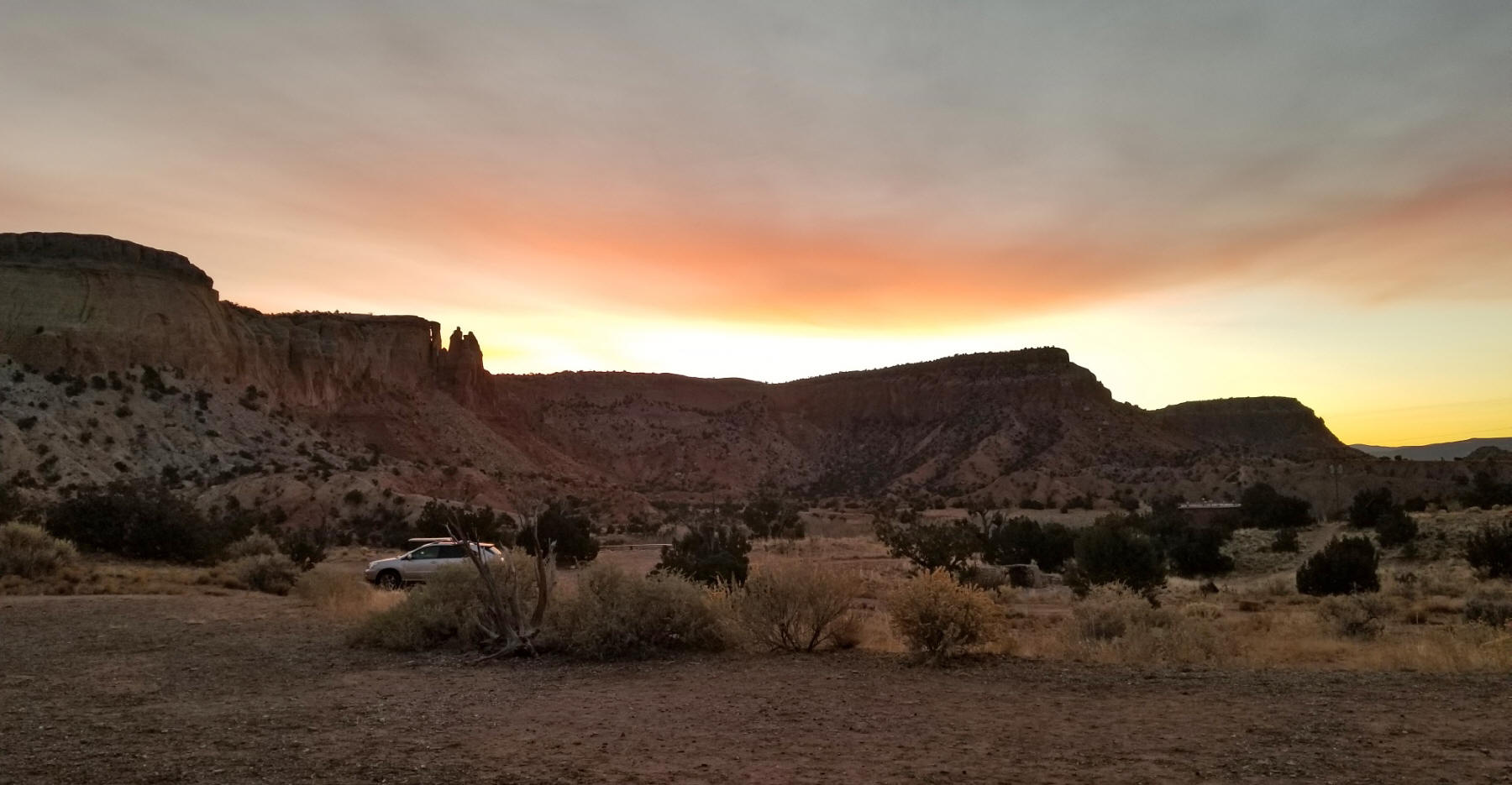|
Moundville Archaeological Park
Story and photos
by Kathleen Walls
There is a lot of history to see and do in
Tuscaloosa, Alabama. You can visit beautiful historic homes like
Jemison Mansion, Battle-Friedman House, Jemison Van De Graaf
Mansion, stay at the 1823 Bama Bed and Breakfast, tour the Civil
Rights Trail and First African Baptist Church and go farther
back at the Alabama Museum of Natural History. Even football
fans can get a touch of history at the University of Alabama at
the Catherine and Pettus Randall Welcome Center that houses
Bryce Mental Health Museum as well as offering future students a
glimpse of life where the Crimson Tide Rolls.
Moundsville Archaeological Park
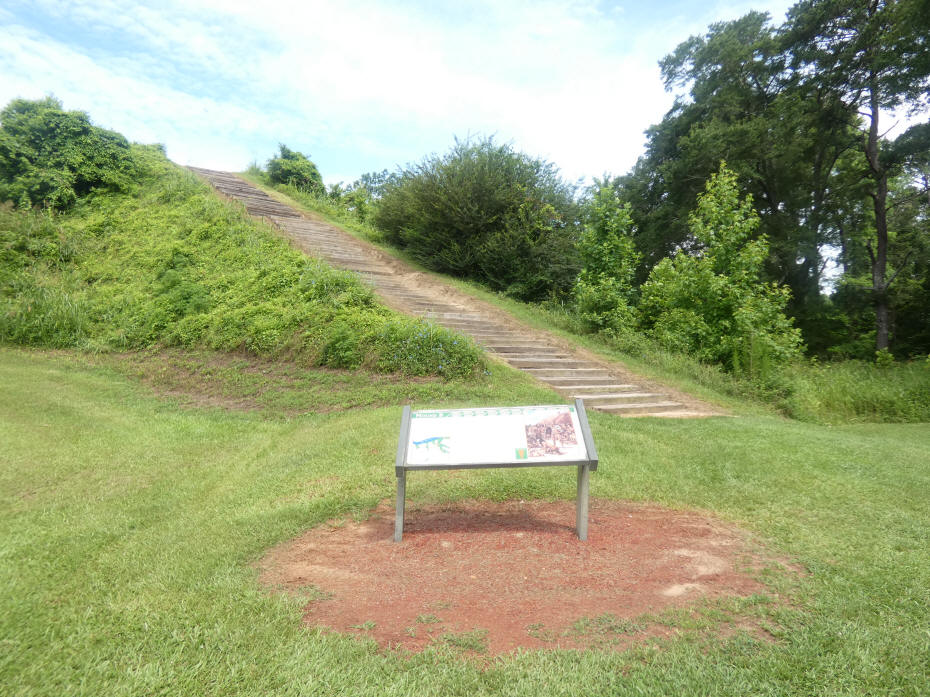
Moundsville
Archaeological Park takes you back much farther to the
Mississippian era, around 1200 AD. The mounds here differ from
the Woodland era of conical burial mounds. I had an informative
tour of the park and its museum with Dr. Ted Nelson, director of
Moundville Archaeological Park.
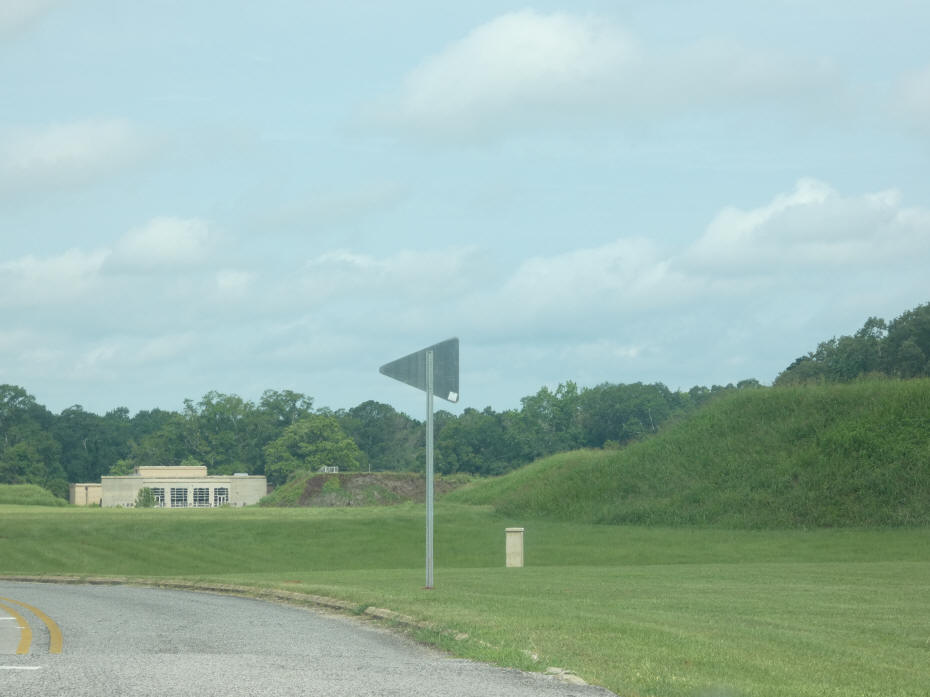
The mounds provide a luscious green
framework around the visitors' center as you drive into the
park. I could see that these were not natural hills. Dr. Nelson
explained that their main purpose was to hold structures. He
pointed out, "Most of them are gonna be flat topped, and they'll
have features on the tops of them where it looked like where you
would see house structures. You'd have the elites and the chiefs
living on the tops of some mounds, other mounds would hold
temples, and some of them held artisan workshops. And then
people lived all around them."
Dr. Nelson explained that the place had to
have been planned, "Because they're equidistant around Mound A,
which is the large mound in the middle. The mounds were built
pretty much in the cardinal directions. So that is north, where
that big mound is, and then south. And most of the mounds are
flat topped and then they'll have flat-ish sides. And they're
oriented north, south, east, and west."
While that is some debate as to how many
mounds there were originally, they definitely have at least 29
that are surrounding a central plaza. The construction of these
went on for 100 to 150 years.
Long before football became the hottest
sport on campuses, Paleo Indians played their own games of
stickball and chunky on theses leveled plazas. These people,
ancestors of the Muscogee, Creek, Choctaw, Chickasaw, Alabama,
and Coushatta tribes, picked this area on the banks of the
beautiful Black Warrier River for a reason. They could get fish
from the river, swim, paddle, and use the river water to nourish
their crops. These people were moving from the hunter gatherer
stage to the early agricultural stage.
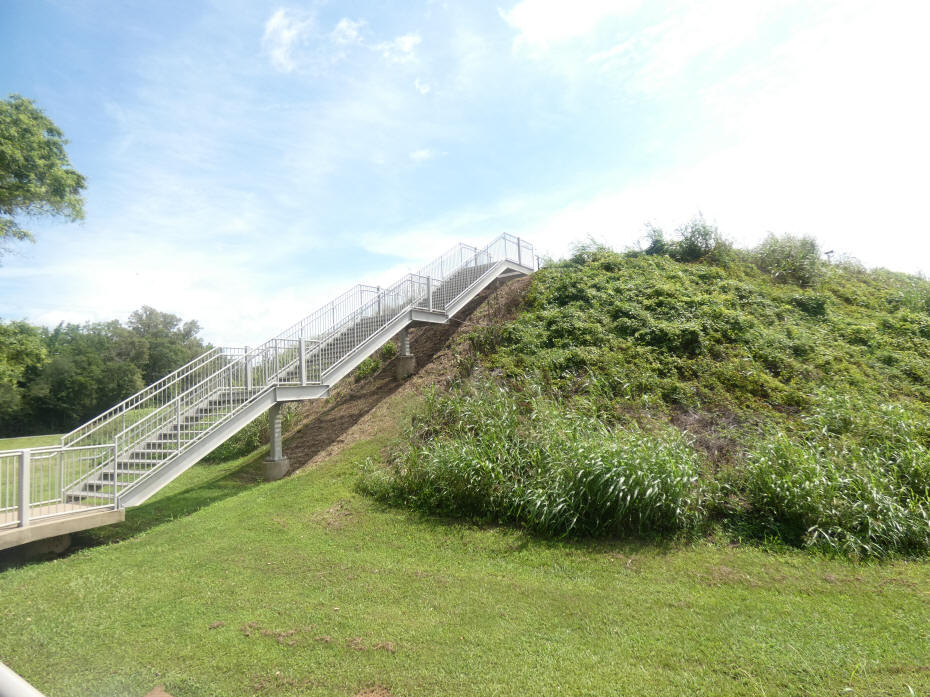
There are two mounds on the site that
visitors can walk on, Mound A and Mound B. Mound B is the
tallest mound not only in the park, but it's the tallest
Mississippian mound in Alabama and the second tallest
Mississippian mound in the nation. This is also the second
largest Mississippian mound site in the nation. I climbed Mount
A and recommend it. It's not a difficult climb as there are
modern stairs and it offers a spectacular view of the site.
It must have been a very colorful place,
full of life, for about 200 years. But around 1350 to 1400, they
began moving away, and the site became abandoned. Archaeologists
don't know why.
Jones Archaeological Museum
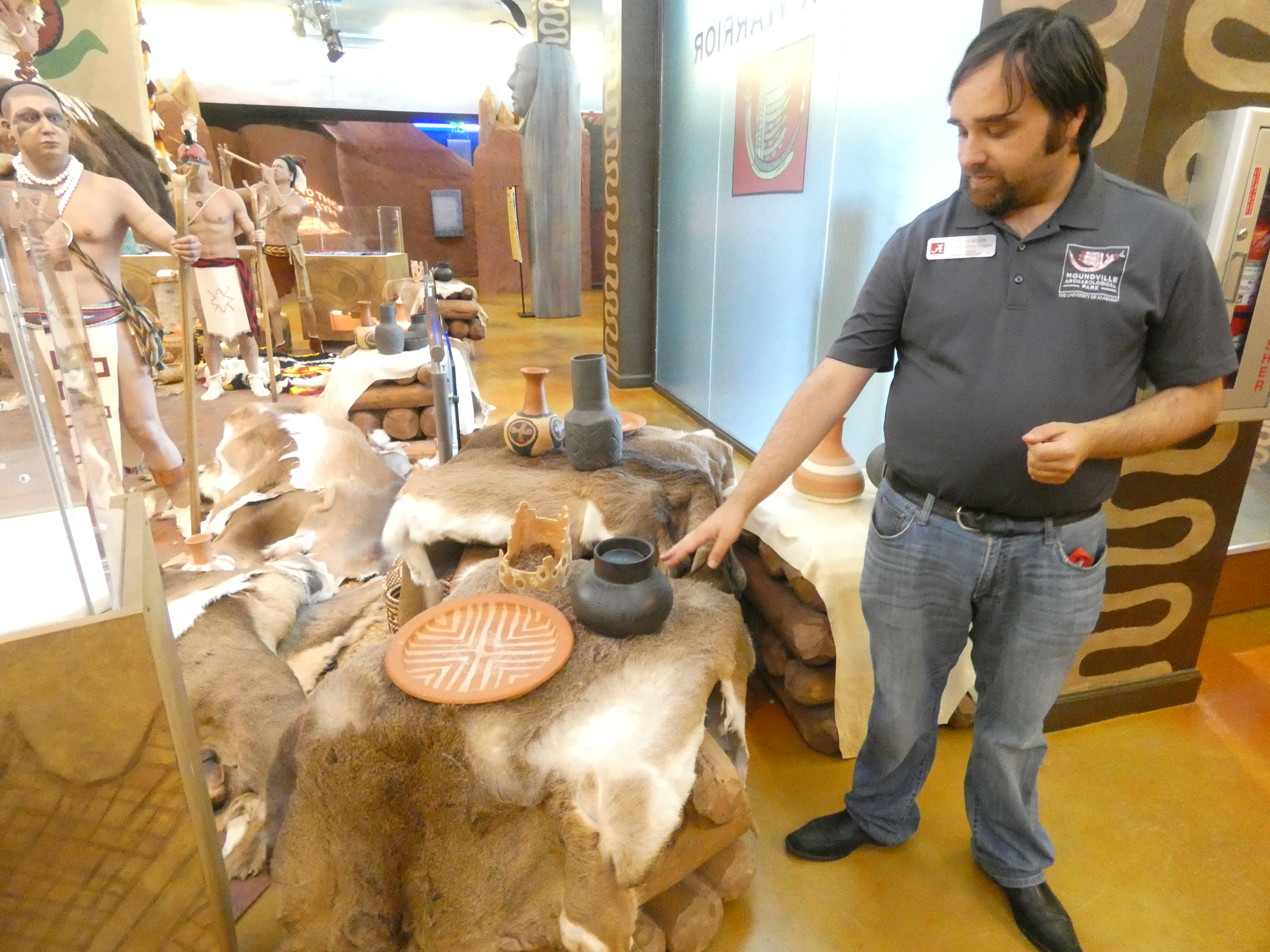
The Jones Archaeological Museum helps flesh out the people
of the mounds. "Lost Realm of the Black Warrior" features over
200 ancient artifacts, several recreated scenes of life at the
mounds, and a multimedia show.
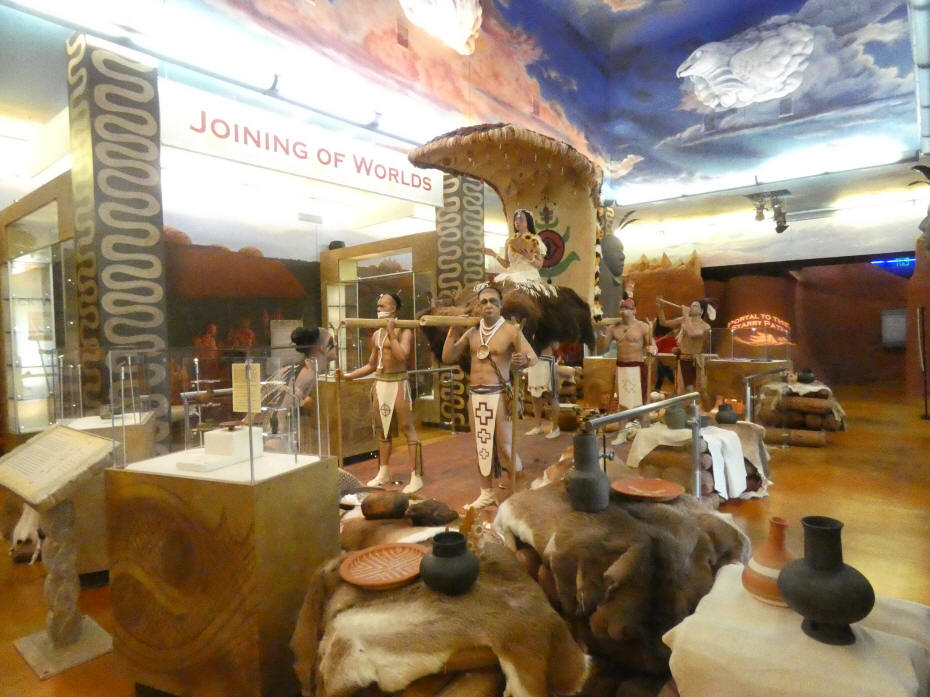
The largest exhibits you see as you enter
tells about society at Moundsville. "The Procession: Splendor at
Ancient Moundville" portrays a young elite woman being carried
on a raised platform by four noble warriors from her tribe to
meet her future husband, probably the heir to the ruler of
Moundville. The people in the exhibit were modeled on real
native Americans.
More
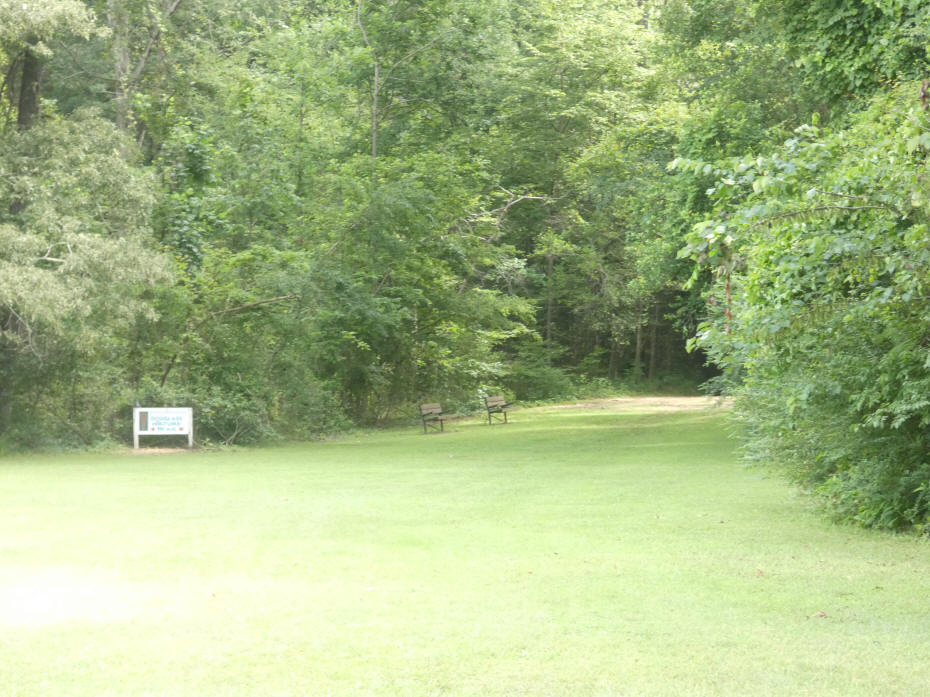
They have a cafe at the musuem and they also have a couple of nature trails.
Dr. Nelson recommends, "The best one is that one right there,
the Douglas Nature Trail, which goes down to the river."
The site hosts many festivals throughout
the year. The RV Park at the site offers both primitive and hook
up sites for RVers.
Public
Disclosure Please Read FTC has a law
requiring web sites to let their readers know if any of the
stories are 'sponsored' or compensated. We also are to
let readers know if any of our links are ads. Most are not.
They are just a way to direct you to more information
about the article where the link is placed. We have several ads
on our pages. They are clearly marked as ads. I think
readers are smart enough to know an ad when they see one but to
obey the letter of the law, I am putting this statement here to
make sure everyone understands. American Roads and Global
Highways may contain affiliate links or ads. Further, as their
bios show, most of the feature writers are professional travel
writers. As such we are frequently invited on press trips, also
called fam trips. On these trips most of our lodging, dining,
admissions fees and often plane fare are covered by the city or
firm hosting the trip. It is an opportunity to visit places we
might not otherwise be able to visit. However, no one tells us
what to write about those places. All opinions are 100% those
of the author of that feature column.
| 
